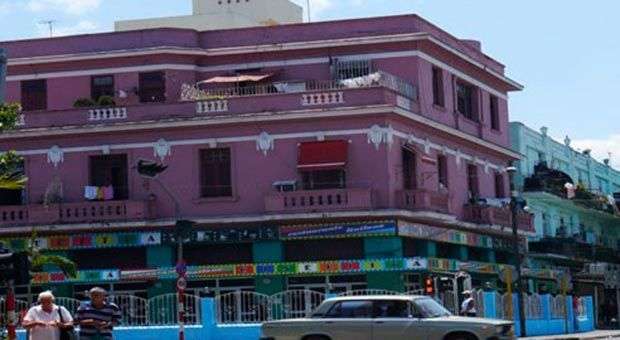For more than 50 years, “real estate” has been a forgotten phrase. During that time, the only thing that Cubans resident on the island knew was that if they had a house, and their needs changed because their family grew or shrank, they would switch “a well-located little place for a large one farther away.” That is called a “permuta” (swap), and it is all that Cubans know about real estate. In light of the changes that are being made on the island, opening up new opportunities for the real estate sector, OnCuba would like to provide a space where matters related to this subject can be discussed. This is a space that goes beyond the dichotomy of to sell or not to sell, and offers answers to the question of Real? or Estate?
Wikipedia defines the concept as properties that “…are closely tied to the land, united inseparably, physically or legally, to the land, such as parcels, developed or not, houses, industrial buildings, farms, in short, properties that are impossible to transfer or separate from the land without causing them damage, because they are part of the ground or anchored to it…”
However, the phrase “real estate” likewise describes a property’s prinicipal uses. When you appraise a piece of property, you ask what its function will be. Are you going to buy or sell a “real home” or an “estate?” A piece of property can have many uses, but its its principal uses are:
1) Living (in or on) it: creating your Real home, inherited by your descendants
2) As a financial advantage: an Estate, a property asset that functions as
savings or for creating an income.
In countries where real estate transactions function best, they are regulated by the State; that is how the rights of everyone involved are protected: buyers, sellers and real estate agents. The latter are viewed as the driving force that stimulates buying and selling, which contributes to sustained economic growth. The Cuban government has just added that legal concept of real estate agent to the list of approved self-employment activities, even though it is a profession that has been exercised in a surreal way for years by the so-called “permuteros” (permuta agents). Now, real estate agents will be key players in ensuring that the housing law takes on a more relevant role in the domestic economy. It is thanks to them that these transactions are carried out. Ninety percent of real estate sales in the United States are done through licensed real estate agents, or realtors. Most sellers decide to hire industry professionals to ensure that their transaction runs its course successfully. Moreover, these agents guide people who wish to buy in a different city by giving them free advice, which is an extremely valuable service. A mistake made out of ignorance can be very costly in a real estate transaction.
After visiting Latin American, American, and European cities, I can affirm that Havana’s urban and architectural design is in no way inferior to the best of these. For that same reason, we must be able to fill the empty spaces that we have today with work that is up to par with everything that was once built with the goal of excellence. In a country that has absorbed so many cultures since its founding, you can find an architectural imprint that describes its history from the bohío to modern buildings like the FOCSA. That legacy must be safeguarded, and to do so, we must be aware of what we have and what its real potential is. Therefore, in every one of these columns, with the support of the blog Arquitectura de Cuba (Architecture of Cuba) and other contributors, we can learn a little bit more about the neighborhood in which you live or where you’re interested in buying.
I would like to conclude with an observation. For the last seven years, the Western world has been battling a financial crisis stemming from an oversupply of housing. This phenomenon, known as the real estate boom, has caused the bankruptcy of financial systems and countries, but in the United States the crisis that lasted seven years is now fading into oblivion, and a new wave of offers is being seen in cities like Miami, where 40 new residential buildings are under construction. Nevertheless, I believe that another five booms will be necessary before Miami-Dade County fills up with houses. On the other hand, during the first half of the 20th century, Havana was the setting of ongoing residential development; in every corner, avant-garde architecture went up. And best of all, every offer drew people who were ready to buy, not just Cubans but also inquiring types from around the world who were looking for their piece of sun, sea, and cheer in the most European city of the Caribbean. Now it’s a matter of waiting to see whether or not the housing law—like the need that Cuba saw for including the roles of real estate agent and contractor as part of its changes—will open up and allow the rest of the world to buy on the island. If that happens, we will be here at “Real or Estate” to tell the tale.
By: Alejandro Amador










